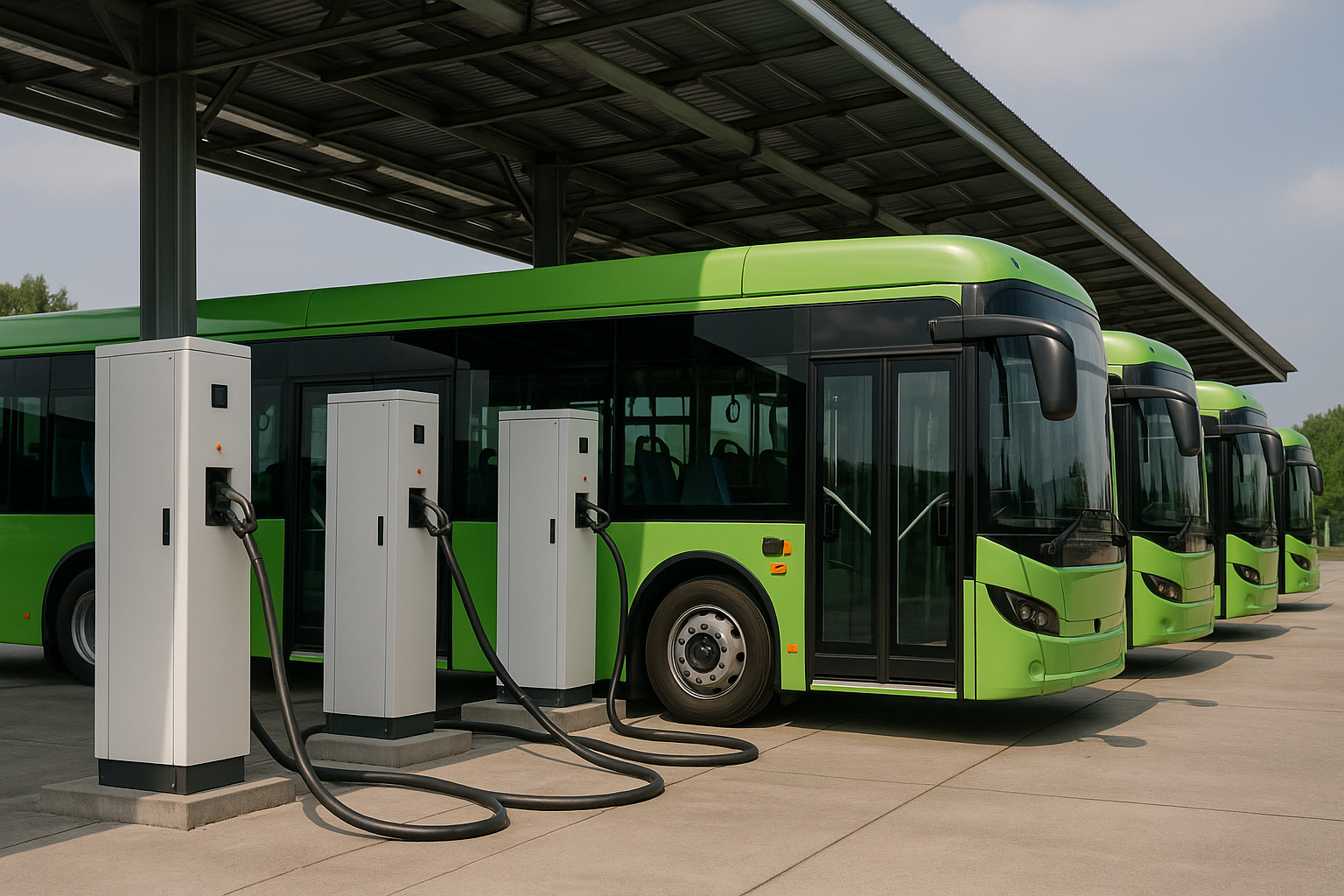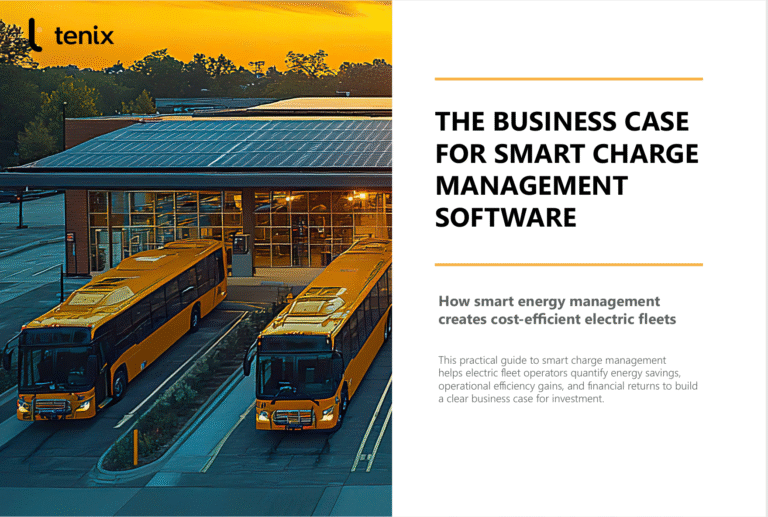When bus and truck operators transition to electric vehicles, many discover that the biggest bottleneck is the depot’s electrical capacity. Even with available chargers, limited grid supply can prevent all vehicles from charging at once. Managing that constraint efficiently is what defines successful fleet electrification. This is where capacity optimization becomes critical for grid management.

What Capacity Optimization Means
Capacity optimization is the process of getting the most from a depot’s existing electrical connection to the grid. Instead of expanding grid capacity, which is costly and time-consuming, operators use smart charging strategies to stay within existing limits. Capacity optimization combines three smart grid management principles: load balancing, peak shaving, and dynamic scheduling. Each one plays a specific role in turning limited infrastructure into a reliable, cost-efficient system.
1. Load Balancing
Load balancing distributes available power across chargers in real time. When several vehicles are plugged in simultaneously, the system divides energy according to grid limits and operational priorities.
For example, a depot might have 2 MW available overnight but 50 vehicles to charge. Tenix Charge allocates power intelligently so that all chargers share capacity without triggering overloads. Vehicles with early departures receive more power first, while others charge gradually throughout the night. This prevents unnecessary infrastructure upgrades and ensures that no energy is wasted on idle chargers.
2. Peak Shaving
Electricity prices often surge during periods of high demand. Peak shaving reduces total power draw during these hours to avoid penalty tariffs and grid stress.
With Tenix Charge, operators can automate this process. The system monitors real-time market prices (such as Nord Pool data) and automatically shifts charging to lower-cost periods. A depot using 10 MWh nightly can save up to 30 percent in energy costs simply by charging at the right times.
3. Dynamic Scheduling
Capacity optimization is not just about energy. It is also about timing. Dynamic scheduling ensures that every vehicle receives the right amount of charge based on when it must return to service.
For example, a city bus fleet might have departures spread between 4 a.m. and 8 a.m. Tenix Charge schedules charging sessions so that early routes finish first, while later departures use remaining capacity efficiently. The system updates automatically if a vehicle returns late or requires additional energy.
The Role of Smart Charging Technology
Tenix Charge brings all these principles together into one platform. By using machine learning and real-time data, it continuously balances demand, cost, and vehicle readiness.
Key functions include:
- Automated Smart Charging – Ensures vehicles charge within depot capacity and at the lowest available cost.
- Depot Monitoring – Provides a live overview of every charger, vehicle, and energy flow.
- Integration with Scheduling Systems – Connects depot charging directly with route and departure data for seamless coordination.
- Brand-Agnostic Control – Works across chargers and vehicles from more than 30 systems and 12 manufacturers.
Rather than simply managing charging stations, Tenix Charge acts as the control center for the entire depot energy system.
Why Capacity Optimization Matters
For operators, the benefits extend beyond cost savings. Optimized capacity ensures that:
- Vehicles are charged and ready for every departure.
- Depot energy use stays within grid limits, preventing overloads.
- Energy bills are predictable, even during volatile price periods.
- Fleets make better use of renewable and off-peak electricity.
This approach turns energy management from a constraint into an advantage.
From Limited Power to Scalable Operations
As electric fleets grow, capacity optimization will determine how far operators can scale without costly grid upgrades. By integrating load balancing, peak shaving, and smart scheduling, Tenix helps fleets get the most from existing infrastructure and plan confidently for expansion.
Already in use across the Nordics, Tenix Charge enables operators to coordinate hundreds of vehicles and chargers while keeping energy costs under control. The result is a depot that runs predictably, efficiently, and sustainably — ready for the next phase of electric mobility.




